last update on September 10, 2003
file name: i-231.html
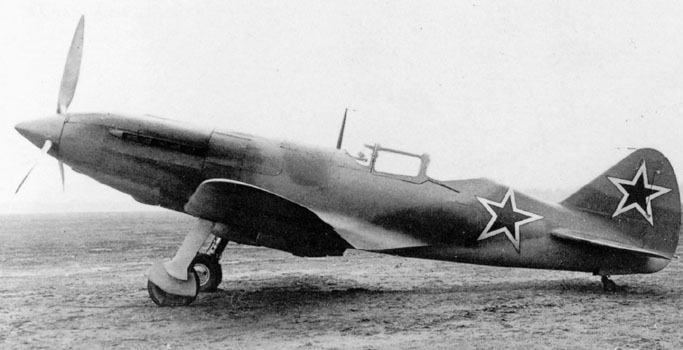 |
OKB-155 started works to modify the I-230 with a new AM-39A engine,
rated 1700/1800 hp, in September 1943. The new aircraft was designated
I-231, or 2D.
Contemporarily to this, a new high altitude fighter with the same engine
was built. This was the I-220, or A; it was a far larger aircraft than
the MiG-3, despite a superficial resemblance. The I-231 was considered
as a backup program for this more advanced fighter. |
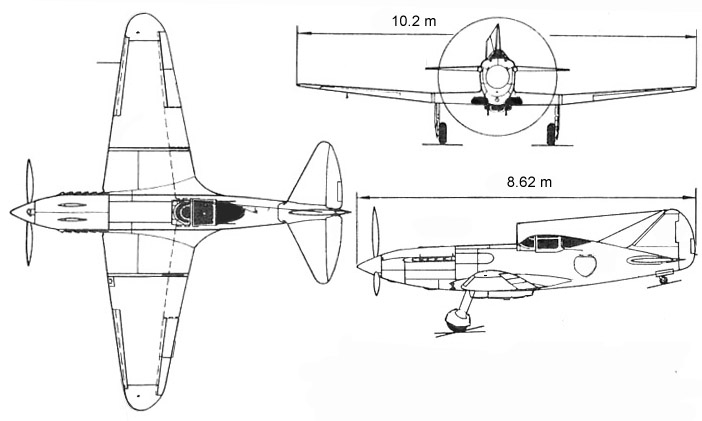 |
In comparison with I-230, the I-231 had some differences:
-
the new AM-39A engine;
-
the cowling and nose panels were slightly modified;
-
a new enlarged water cooler with 30 dm2 effective cooling area was installed;
in this water cooler was integrated the additional cooling loop (7 dm2)
of the intercooler cooling air from the supercharger to the cilynders;
-
the fuselage tank was enlarged to 500 l.
-
the rear fuselage was all metal built, with a bit lowered back;
-
the rear window of the canopy was without the central strut to improve
visibility;
-
the horizontal tail surfaces were lowered of 200 mm (as on original MiG-3)
to avoid vibrations noted on I-230.
|
 |
The overall look of the coolers and air intakes resembles to that of
I-230, even it slightly larger; even wingroot intakes are larger than those
of I-230, and trapezoidal.
The oil radiator is located between the main undercarriage bays, and
ends with a n outlet closed by a movable flap.
The water radiator is behind it, and receives air both from the wingroot
intakes and from the smaller inlets on its sides. It ends with a wider
outlet closed by a movable flap.
The supercharger inlets are placed in the wingroot intakes too. |
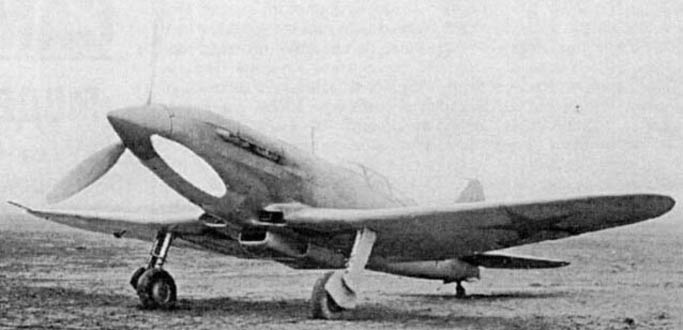 |
The only prototype looks camouflaged with AMT-11 light grey and AMT-12
dark grey bands, with AMT-7 light blue undersurfaces, with white (or silver?)
and red outlined red stars on 6 standard positions. The propeller blades
look unpainted, while the undercarriage legs and wheel disks look silver
or unpainted. |
The first flight was made on October 19, 1943; the team was headed by
test pilot Captain V.M.Savkin, chief engineer V.Fufurin and motor engineer
I.V.Kotov.
On 5 November, an heavy misfunctioning of the supercharger oblied the
pilot to make an emergency landing on Noginsk airport. Despite the emergency,
the landing was executed with undercarriage extracted, and didn't damage
the aircraft; the pilot Savkin was rewarded by the Order of Red Star for
this.
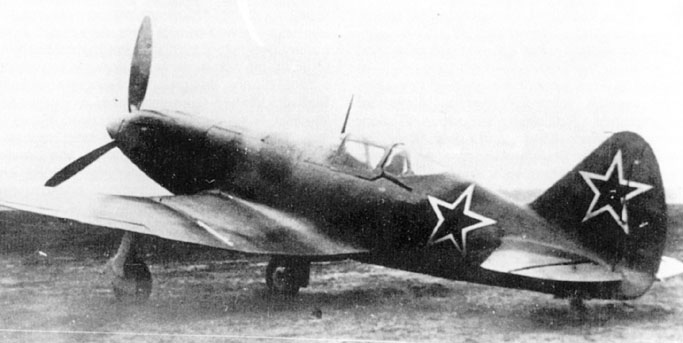 |
The tests were resumed on November 23, after repairs and engine substitution.
The top speed was of 707 km/h at an altitude of 7100 m, and 5,000 m
altitude was reached in 4,5 min.
This was the higher speed reached by a Soviet fighter to that date.
The prototype was transferred to NII-VVS for state tests, after some
modifies involving the replacement of the propeller with an AV-5L-126E,
which weight was 25.3 kg lower.
|
The tests were soon interrupted by an accident, because, during landing,
the flaps didn't function properly and the brakes were damaged, so the
aircraft went out at the end of landing stripe and turned over.
The damaged aircraft was returned to OKB_155 for repairs, and was back
again to NII-VVS on 12 May. But on May 19, the engine failed while testing
the boosted regime. The deliver of a new AM-39 delayed and then the AM-39
program was abandoned due to its unreliability, and then the work on I-231
was abandoned too.
The I-231 was the last of the MiG-3 family, and was thought as a backup
program for a more innovative family of large high-altitude fighters, the
A, composed by I-220/221/222/223/224/225. This family of fighters was developed
between 1943 and 1945 and never become operational due to the advent of
the jet age.
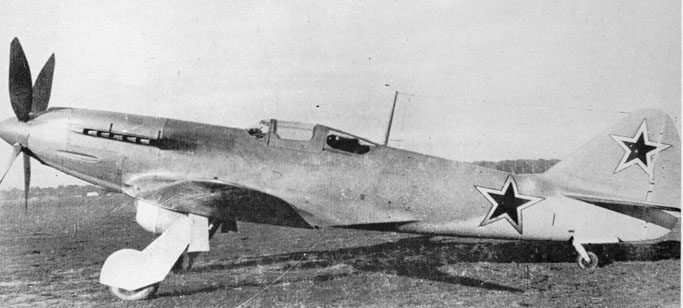
|
I-230 |
I-231 |
I-220 (A) n.1 |
| first flight |
May 1943 |
October 1943 |
January 1944 (with AM-38)
July 1944 (with AM-39A) |
| built |
6 |
1 |
2 I-220
(+1 I-221+ 1 I-222+1 I-224+ 2 I-225) |
engine
type |
hybrid AM-35A/
AM-38 |
AM-39 |
AM-39 |
| power |
1,350 hp |
1,700 hp |
1,700 hp |
Max speed
with closed canopy |
656 km/h
at 7000 m |
707 km/h
at 7,100 m |
697 km/h
at 7,000 m |
| max speed at sea level |
505 km/h |
? |
550 km/h |
| ceiling |
11,900 m |
11,400 m |
11,000 m |
| climb to 5,000 m |
5'12'' |
4'30'' |
4'30" |
| lenght |
8,62 m |
8,62 m |
9,6 m |
| wingspan |
10,2 m |
10,2 m |
11,0 m |
| wing area |
17,44 sq.m |
17,44 sq.m |
20,38 sq.m |
| empty weight |
2600 kg |
2600 kg |
3103 kg |
| gross w. |
3260 kg |
3280 kg |
3835 kg |
| fuel (kg) |
324 kg |
333 kg |
? |
| fixed armament |
2x 20 mm ShVAK |
2x 20 mm ShVAK |
4x20 mm ShVAK |
| fall or launch armament |
? |
? |
? |



